Best FPV drones 2024: Embark on a raw and rewarding flying experience
The best FPV drones pack in excellent features, can hone your flying skills and capture stunning video footage. Here are our picks of the best models.
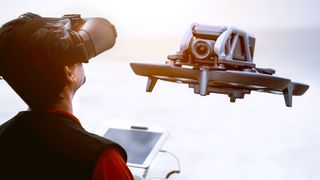
Our guide to the best FPV drones will introduce you to a number of our favorite models on the market, all offering impressive specs and excellent performance at a range of different price points.
Drones come in many different forms, and while many users will prefer to go for one of the best camera drones, there's nothing quite like flying an FPV drones. Short for 'First Person View', FPV drones come with goggles to allow you to see exactly what your drone sees. It's the closest you'll get to flying while keeping your feet on the ground, essentially.
The birds-eye view provided by the best FPV drone means it's easier than camera drones to maneuver around obstacles and pull of aerial stunts like rolls, flips and dives. When you're seeing everything live through your goggles, it's an exhilarating experience. But like VR headsets, however, some users can be prone to sickness while using a FPV drone, so they're perhaps not for everyone.
If you're looking to capture aerial photos and videos, in what you might call the standard way, check out our best drones and best beginner drones guides. In these, we explore the best drones currently available for all budgets and requirements. But for now, we're focusing on the best ready to fly FPV drone kits to get you started on your FPV journey.
The Quick list
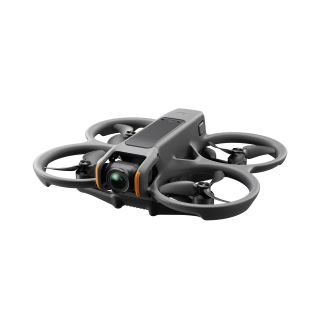
Best overall
With updated features, goggles and controllers, the DJI Avata 2 offers beginners and experts the ability to capture excellent 4K video while enjoying the immersive flight experience offered by this drone.
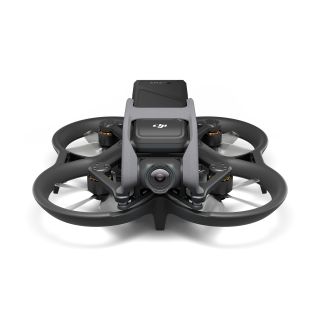
Best older model
With excellent 4K video capture and the ability for beginners and experts to fly the drone in a way that suits them, immersive FPV video is available to everyone.
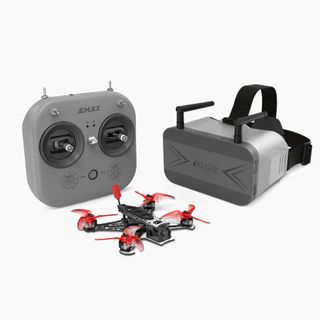
Best FPV kit for beginners
The Emax Tinyhawk III Plus Freestyle RTF Kit offers a digital camera and FPV goggles for a crisp and clear FPV view. This is alongside excellent performance from this mini freestyle FPV drone.
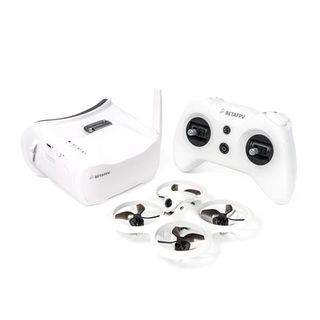
Best FPV kit for beginners
The BetaFPV Cetus X FPV Kit is a powerful microwhoop drone with basic safety features in one flight mode for beginners but also offers Manual mode for experienced pilots.
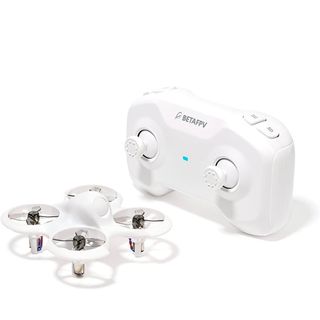
Best cheap FPV drone
The BetaFPV Cetus Lite FPV Kit comes with everything you need to get started with FPV flight and is perfect for getting used to flying with FPV goggles.
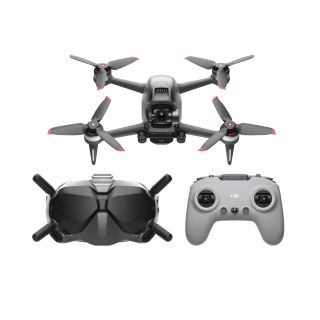
Best 4K FPV drone
If speed, maneuverability and 4K video capture are on your FPV wishlist, the DJI FPV could be the perfect drone for you.
Load the next 3 products ↴
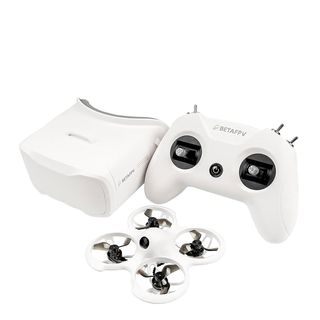
Best for learning to fly manual FPV
The BetaFPV Cetus Pro kit offers everything you need to get started alongside flight modes that will help to take you from FPV zero to hero in no time.
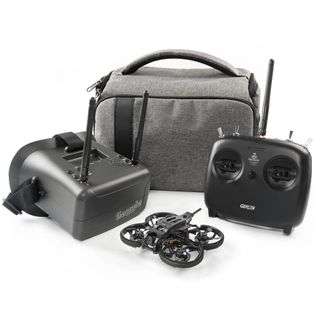
Best for cheap 4K video capture
With the ability to capture basic 4K video with the drone’s FPV camera, the GepRC Tiny Go 4K is a complete kit that’s a great option for beginners.
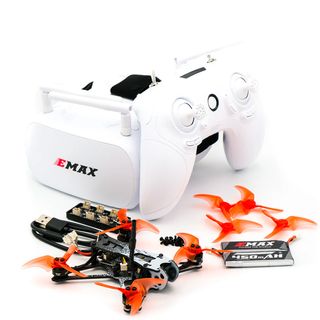
Best FPV freestyle drone
The Emax Tinyhawk II Freestyle RTF Kit is a great option if you plan to learn how to fly freestyle with an inexpensive pre-built FPV drone.
Best FPV Drones we recommend in 2024
Why you can trust Space.com
Best FPV drone overall





Specifications
Reasons to buy
Reasons to avoid
✅ You’re looking for simplicity: Alongside providing excellent image quality for video, the Avata 2 is much less hassle than traditional FPV drones with smart batteries and advanced features.
❌ You're on a budget: The Avata 2 is reasonably priced but it may be too expensive for some beginners. If you'd like a more affordable kit to get started, consider the BetaFPV Cetus X Kit.
🔎 The DJI Avata 2 builds upon and improves the experience provided by its predecessor to deliver an FPV drone that's suitable for FPV beginners and professionals alike, with video capture available up to 4K 60 fps. ★★★★★
The DJI Avata 2 comes almost hot on the heels of its predecessor, the DJI Avata, to deliver a more advanced FPV drone that's suitable for beginners and experienced FPV Pilots. With features including GPS positioning, rear and downward sensors and two controller options, this is an FPV drone that blends the ease, convenience and technology of a camera drone with the robust and exciting characteristics of FPV models.
The beauty of this drone is that it's easy to use, as discussed in our full DJI Avata 2 review. The kits come with everything you need, including DJI Goggles 3 and a Motion 3 Controller, which is easy and intuitive to use. The DJI FPV Remote Controller 3 can be purchased separately and unlocks the ability to fly in Manual mode for a true FPV experience.
Not many FPV drones can capture 4K video, and that's where the DJI Avata 2 shines. You can record 4K up to 60fps, using either a Normal color profile or D-Log M if you want to be able to professionally edit and color grade your footage afterwards. We've found still image quality to be excellent too, thanks to the 12MP 1/1.3-inch sensor and 12mm equivalent lens.
You'll get up to 23 minutes of flight time from the Avata 2, which is fairly impressive considering that this is a cinewhoop type of drone. It's also worth noting that the batteries used here are smart batteries, meaning they automatically discharge. We think they're much easier to use than traditional LiPo batteries found on other drones.
- Read our full DJI Avata 2 review
| Attributes | Notes |
|---|---|
| Design | Cine whoop design with propeller protection. |
| Functionality | GPS, hovering and beeper alongside impressive flight times. |
| Performance | Excellent 4K video quality. |
Best older model





Specifications
Reasons to buy
Reasons to avoid
✅ You're a beginner: While it's not a drone aimed at beginners, we noted that it's easy to fly if you are a beginner and it'll last you beyond beginner status, too.
❌ You want to use it for stills photography: It can capture JPEG images, but there's no option to shoot in RAW, not to mention the horizon will most likely always be wonky.
🔎 FPV drones are notoriously difficult to fly, but with the DJI Avata anyone can capture immersive FPV video footage in stunning 4K resolution at up to 60 fps, and it’s a whole lot of fun to fly, too. ★★★★★
While we think the DJI Avata 2 drone is the best FPV drone currently on the market, its predecessor, the Avata, is still a very worthy contender. It might lack some of the upgrades of its bigger sibling, but there's still an awful lot to like here — and thanks to being an older model, it means you can pick it up for a cheaper price, too.
You'll find some features typical of camera drones built into the Avata, such as GPS positioning and downward sensors, along with the freedom to fly manually in Acro mode. The downside there is, if you want to use Acro mode, you'll need to buy the FPV Remote Controller 2 which is only available separately. You do get a Motion Controller included, though, which we've found to be an adequate and easy to use device, but it doesn't give as much freedom as the FPV Remote Controller 2.
Video can be captured in 4K up to 60fps, 2.7K at up to 100fps and 1080p at up to 100fps with DJI Goggles 2. The DJI FPV Goggles V2 however, can shoot 2.7K and 1080p video at a rate of up to 120fps.The video quality from the 48MP 1/1.7-inch CMOS sensor with an f/2.8 lens with a 12.7 mm equivalent focal length is excellent overall, as we discussed in our DJI Avata review.
The DJI Avata features a cinewhoop design with prop guards around the propellers to protect them in the event of a crash. These can be purchased separately and replaced if damaged. The drone is 180 x 180 x 80 cm and weighs in at 14.46 oz/410 g with a battery, which is quite heavy for a drone of this style, but it does include 20 GB of built-in storage alongside a separate microSD card for additional video storage.
You can get the Avata by itself, or in two kits with different goggle choices. There's also a Fly More Bundle available if you want more extras.
- Read our full DJI Avata review
| Attributes | Notes |
|---|---|
| Design | Robust cinewhoop design. |
| Functionality | FPV Goggles 2 provide a clear digital FPV feed. |
| Performance | Fantastic video quality. |
Best beginners freestyle kit






Emax Tinyhawk III Plus Freestyle RTF Kit
Our expert review:
Specifications
Reasons to buy
Reasons to avoid
✅ You would like to learn how to fly freestyle: This kit is highly capable despite its small size and is designed for beginners and intermediate pilots.
❌ You would like hover functionality: If you'd like camera drone functionality such as hovering and Return to Home, the Avata 2 is an FPV drone that can do both.
🔎 The Emax Tinyhawk III Plus Freestyle RTF Kit is one of the best ready to fly kits we've tested. It's incredibly agile and, indeed capable, not to mention is a huge amount of fun to fly with 1S and 2S battery configurations for less or more power to the motors. ★★★★★
The Tinyhawk III Plus Freestyle, as the name suggests, is a freestyle FPV drone. This means it's perfectly designed and tuned for acro flight where you can flip, roll and dive the drone. You can even control the power output of the motors thanks to the ability to run the drone at 1S or 2S in terms of the battery configuration. Moreover, it features an HDZero digital VTX, so the FPV feed is much clearer than analog FPV drones. We loved this functionality and cover it in detail in our full review, which will be live soon.
You'll find everything you need to get started within the Tinyhawk III Plus Freestyle package. Along with the drone itself, you'll get Emax Transporter 2 HD FPV Goggles, an Emax E8 Transmitter, two sets of propellers, two 1S batteries, a six-port USB battery charger and a wealth of other accessories. If you need, more accessories can be purchased separately, such as extra batteries. We think it's worth stocking up on more so you can increase your flight times: A battery typically lasts for around three or four minutes.
The Transporter 2 HD FPV Goggles produce an HD image and can capture up to a 720p 60 FPS (1280 x 720 px) video using the built-in DVR when a microSD card is inserted. These videos can be viewed in the goggles or downloaded to your computer where you can share your best FPV flights to social media and beyond. This kit isn’t cheap, and there is a less expensive analog version, but what you get is well worth the money in terms of quality, versatility and performance.
- Our full Emax Tinyhawk III Plus Freestyle review is coming soon
| Attributes | Notes |
|---|---|
| Design | Small, lightweight X-shape freestyle design. |
| Functionality | Three flight modes, an HD VTX and a beeper. |
| Performance | Excellent all-round performance from this tiny but mighty drone. |
Best for beginners







Specifications
Reasons to buy
Reasons to avoid
❌ You want long flight times: The battery life is short at just 5 minutes. The batteries charge in 20, but if you're looking to fly for longer it's worth looking at some other options.
❌ You want long flight times: The battery life is short at just 5 minutes. The batteries charge in 20, but if you're looking to fly for longer it's worth looking at some other options.
🔎 The Cetus X is BetaFPV’s top-of-the-line Cetus kit with everything you need to get started in FPV with a drone that’s suitable for absolute FPV beginners but is still powerful enough and maneuverable to satisfy more experienced FPV pilots. ★★★★½
The Cetus X, leading BetaFPV's Cetus series, stands out as the most powerful and adaptable model in the lineup. There are two versions available and the one we reviewed is the Cetus FC version which features position hold, hovering and emergency landing in Normal flight mode. This makes the drone behave more like a camera drone than a FPV drone, which is great for getting used to using FPV goggles, and beyond this, the most useful mode is Manual/Acro where the Cetus X is powerful enough to perform freestyle tricks such as rolls, flips and dives etc.
We think the Cetus X is a great choice if you're looking to go from a beginner user to an experienced FPV pilot, and it won't break the bank. It's a reasonably budget-friendly drone and in the kit you'll find everything you need to get started: the drone, goggles, controller, batteries, charger and a number of other helpful accessories.
One thing to bear in the mind is that the battery life is fairly short: Each set of batteries will get you around five minutes, although that's fairly run-of-the-mill for microwhoop-type FPV drones. You'll get a full charge in about 20 minutes, so we'd recommend purchasing extra batteries to give you more flight time while you're waiting for more to charge.
The Cetus X is a strong and fun drone, with better endurance and power than the other three Cetus models. Plus, it comes with goggles that can record the 480p FPV video feed.
- Read our full BetaFPV Cetus X review
| Attributes | Notes |
|---|---|
| Design | Small, lightweight and powerful 2S drone. |
| Functionality | Three flight modes and three speed settings. |
| Performance | Turtle Mode flips the drone after crashes. |
Best cheap FPV drone






Specifications
Reasons to buy
Reasons to avoid
✅ You're a beginner: This would be a great option if you're a beginner, or if you're buying for children, and it's really easy to fly.
❌ You want to shoot photos or videos: It isn't capable of recording, so photographers or videographers will definitely want to look elsewhere.
🔎 The BetaFPV Cetus Lite FPV Kit is a unique kit for getting started with FPV drone flight for a low cost. However, with just one self-leveling flight mode and two sedate speed modes, you can’t progress your FPV flying skills beyond getting used to goggles so an upgrade would be required fairly soon. ★★★½
If you're interested in experiencing FPV flying without spending a fortune, the BetaFPV Cetus Lite FPV Kit is an excellent choice. In our Cetus Lite FPV Kit review, we found that it is incredibly small and lightweight and not particularly powerful, making it suitable for indoor flight only using the included basic controller and analog FPV goggles.
It includes all the necessary components to start, such as analog FPV goggles and batteries. This kit is known for its simplicity and user-friendly design, making it suitable for everyone, including children. It's a budget-friendly way to dive into the world of FPV hassle-free.
We've found the Cetus Lite FPV Kit very easy to fly, making it a great place to start. Releasing the left control stick will automatically center it, and the drone will always stay level. It can't do flips, rolls or dives so if you fancy some stunt-flying, this isn't the FPV drone for you — but if you're simply looking to nail the basics of steady flight, the Cetus Lite will do just nicely.
The downside, of course, is that you won't be able to level up your flying skills by using the Cetus Lite and for most users, that will make the lifespan of the product rather short. On the upside, you'll also get used to using FPV goggles by flying this drone, so if you're not sure if FPV piloting is for you, this is a rather inexpensive way of finding out.
- Read our full Cetus Lite FPV Kit review
| Attributes | Notes |
|---|---|
| Design | Extremely small and lightweight. |
| Functionality | Only one flight mode and two speeds. |
| Performance | Incredibly easy to fly. |
Best for 4K video capture






Specifications
Reasons to buy
Reasons to avoid
✅ You're a more experienced FPV pilot: This isn't a drone for beginners, both in terms of experience and budget.
❌ You want something small and lightweight: It weighs around 28oz (794g), which is heavier than many FPV drones.
🔎 For more seasoned flyers, one flight with the DJI FPV will likely have you hooked. Just don't crash it unless you have rather deep pockets. ★★★★
DJI's first venture into the FPV drone space, the DJI FPV, received mixed reviews due to its larger and heavier build compared to traditional FPV drones. It includes GPS positioning in Normal mode, allowing beginners to fly it like a camera drone, which we appreciated in our DJI FPV review. A notable safety feature in this mode is the sensors that slow down the drone upon detecting obstacles, though it won't bring the drone to a complete stop.
The camera provides both the digital FPV video feed as well as the ability to capture immersive footage up to 4K at 60fps. This can be captured in the Standard color profile for straight out-of-camera footage, or in D-Cinelike (RAW) for color grading and incorporating into a professional workflow. At over a year since its release, the DJI FPV is available for a competitive price.
There are two modes to choose from on the DJI FPV: Sport and Manual. While you're in Sport mode, you can fly up to 60 miles per hour, and in Manual, you can go even faster at an incredible 87 mph. We wouldn't recommend using Manual mode unless you're an expert with plenty of FPV experience, however.
Sport mode is a good, balanced mode suitable for most users. It turns off the downward sensors and while it isn't quite as fast as its Manual counterpart, it's still exhilarating to use.
- Read our full DJI FPV review
| Attributes | Notes |
|---|---|
| Design | Fixed (non-foldable) frame. |
| Functionality | Stills and video functionality limited. |
| Performance | Fast 87mph in Manual mode. |
Best for learning to fly manual FPV










Specifications
Reasons to buy
Reasons to avoid
✅ You're a beginner: If you've never flown a drone before, this could be the perfect option to learn how to.
❌ You want to capture video or stills: This tiny drone is aimed at absolute beginners who are solely focused on learning to fly, so isn't capable of recording photos or video.
🔎 With a low cost and a complete kit with everything you need to get started, the BetaFPV Cetus Pro Kit provides a low-risk entry point to learning how to fly FPV drones when compared to more expensive models. ★★★★
The Cetus Pro Kit is aimed squarely at absolute FPV beginners and those who would like a tiny FPV drone they can take anywhere. In our BetaFPV Cetus Pro review, we noted that it isn't capable of recording stills or video, but this drone is purely for learning to fly so it's not much of an issue.
The kit comes with everything you need including the drone, FPV goggles, a controller, a carry case, two batteries, a USB charger, a voltage tester and other accessories.
There are also three different speed modes available in three main flight modes: Normal, Sport and Manual. When you're flying in Normal mode, the Cetus Pro makes use of optical flow sensors which help the drone to hold its position and fly over obstacles. It's a good place to start if you're a beginner, and once you get the hang of flying you can switch over to Sport, and then Manual as you become more accustomed to FPV piloting.
Sport mode allows for a little more freedom, but it places restrictions on the drone's angle, meaning it can't be pitched or rolled too excessively. When you switch to Manual mode, however, you have complete freedom. Great for pros, but if you're out of your depth, it's easy to lose control — so don't use it until you're ready!
During the learning stage, it's common to experience some crashes, but the Cetus Pro's strong build reduces the risk of damage. If the drone flips upside down after a crash, you can use Turtle mode to flip it back and keep flying, saving you the hassle of going to get it. The small batteries give you about 5 minutes of flight time, and although the goggles have a decent 800x480p resolution, it's best to keep the drone relatively close (within an unobstructed range of up to 80m) for a clear video feed.
- Read our full BetaFPV Cetus Pro review
| Attributes | Notes |
|---|---|
| Design | Built to withstand crashes. |
| Functionality | Three flight modes and speeds. |
| Performance | Extremely easy to fly. |
Best for cheap 4K video capture
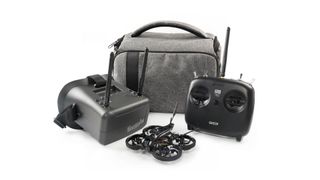
GepRC Tiny Go 4K
Our expert review:
Specifications
Reasons to buy
Reasons to avoid
✅ You want to record video: This drone can record 4K 60fps video footage.
❌ You want good quality footage: Although it can shoot 4K, the quality isn't on the same level as other drones like the ones from DJI. Plus, there's no stabilization so footage can often be shaky.
🔎 The GepRC Tiny Go 4K is advertised for indoor flight, although we found that tricky in reality. It can be flown outdoors, but not in strong winds. It's not the same quality as other more expensive drones, but it's an affordable way to capture 4K video footage. ★★★★
The GepRC Tiny Go 4K is advertised as being for indoor flight only due to its tiny whoop design and foam padding around the propeller guards. But we've found it powerful enough to fly outside, as long as it's not particularly windy: The tiny size and weight of the drone means it's going to easily get carried away in a gust.
The package includes the drone, goggles, a controller, four 1S batteries (two powering the drone), a USB battery charger, a carry bag and accessories. The box-type goggles provide a standard 800 x 480p resolution typical for beginner RTF kits. The receiver has a transmission range of 100m, limiting how far you can fly the TinyGo from your position.
While there's no gyro data recording, which might lead to some shaky footage, the Pavo25 still provides decent video quality, although it might not be as good as action cameras or DJI's FPV drones. One standout feature is its capability to capture 4K video during flights, which is particularly attractive for new FPV pilots. Additionally, the goggles come with a built-in DVR, allowing you to record the FPV feed for later viewing.
| Attributes | Notes |
|---|---|
| Design | Weighs 2.82oz / 80.2g (including batteries). |
| Functionality | 4K 60fps video capture. |
| Performance | No gyro data for video stabilization. |
Best FPV freestyle drone
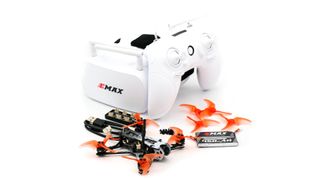
Emax Tinyhawk II Freestyle RTF Kit
Our expert review:
Specifications
Reasons to buy
Reasons to avoid
✅ You want to learn basic freestyle tricks: This drone is focused on freestyle flying, making it a great option for learning some basic tricks.
❌ You want to record video: It can't record video, so keep that in mind if you want to record your freestyle tricks.
🔎 The Emax Tinyhawk II Freestyle RTF Kit provides everything you need to get started in FPV but with a drone focused on freestyle flying and the ability to perform basic tricks. ★★★½
One of the great things about FPV drones is the freedom to fly in a freestyle manner. Not only is it thrilling, but the videos you can make with skill can be really impressive. The Emax Tinyhawk II RTF Kit gives you everything you need to start your FPV journey, featuring a drone built specifically for freestyle flying. It's set at a moderate level, making it beginner-friendly, and while you can do basic tricks, it can't record video.
We particularly like that the Emax Tinyhawk II RTF Kit comes with a gaming-style controller which means, if you've ever played a video game, you'll be instantly familiar with how it feels in your hands. It might be a step away from the traditional FPV controller design, but it's a great place to start.
You'll find three flight modes on the Tinyhawk II: Air, Angle and Manual/Acro. Air mode is a good place to start, with a higher throttled that prevents the drone dropping suddenly. Angle mode limits how much you can pitch and roll the drone while flying, which is good for getting used to controls. And, of course, Manual/Acro mode is for experienced users only, allowing you to go wild in flight.
Despite its small size, you can purchase 3D printed camera mounts for the Insta360 Go/Go 2, and the drone can fly with these small cameras attached, although the flight times are reduced due to the additional weight. The goggles feature a lower resolution of 480x320p compared to the 800x480p of most of the other analog goggles included in RTF kits in this guide.
| Attributes | Notes |
|---|---|
| Design | Small and lightweight. |
| Functionality | Three flight modes. |
| Performance | Lower goggle resolution than other kits in this guide. |
Best FPV Drones Frequently Asked Questions
Video and stills photography is complicated enough but add to that the skill and knowledge required to pilot a flying device that does this makes things even more difficult. We've answered some of your frequently asked questions regarding the best first-person view drones.
What is the best FPV drone?
The DJI Avata 2 is the best FPV drone you can buy right now because it is easy to use, boasts excellent video quality and it can be controlled in multiple ways.
How much does a decent FPV drone cost?
Prices for a good FPV drone range between $140 and $850, depending on the make and model you choose.
Are FPV drones better than traditional drones?
Depending on how you like to pilot, yes. If getting an immersive piloting view while wearing goggles is important to you (such as for perfecting cinematic video or racing drones) then an FPV drone may be a better buy.
What should my first FPV drone be?
For absolute beginners buying their first ever FPV drone we'd recommend the BetaFPV Cetus X. It's a powerful micro whoop kit that ships with everything you need to get started (including goggles).
What is an FPV drone?
They are first-person view drones, usually operated using a screen or virtual reality goggles, instead of looking directly at the drone. Traditionally, FPV drones required pilots to assemble them by purchasing individual components and doing some soldering. However, a growing trend is the availability of ready-to-fly (RTF) and bind-and-fly (BNF) kits that come pre-assembled. With these kits, you simply need to charge the batteries or bind the drone with the FPV goggles and controller before taking flight. These kits make FPV flying more accessible, especially for those who may not be very tech-savvy.
How we test FPV drones
FPV drones are typically tested over several days in different locations and environments to test flight performance, flight features, overall handling and the image quality and reliability of the FPV video feed to the goggles. FPV drones typically don’t have built-in cameras for video capture, although some models do capture high-quality video so this is always tested when available.
Drones are flown in Acro/Manual mode to test the connection between the aircraft and the controller, latency between the two, the accuracy of the controls and flight performance in general. And if the drones offer any kind of beginner flight modes with basic safety features, these are tested in an indoor environment due to reduced power and to test the sensitivity of the controls.
The testing we conduct here at Space.com is compliant with local aviation laws and restrictions so all flights are safe and legal. Drone laws vary from region to region, so you must check local laws to ensure that you’re following the guidelines for your country before embarking on your first drone flights.
Join our Space Forums to keep talking space on the latest missions, night sky and more! And if you have a news tip, correction or comment, let us know at: community@space.com.
Get the Space.com Newsletter
Breaking space news, the latest updates on rocket launches, skywatching events and more!
James is an award-winning freelance landscape and portrait photographer, as well as a highly experienced photography journalist working with some of the best photography magazines and websites with a worldwide audience. He’s also the author of The Digital Darkroom: The Definitive Guide to Photo Editing. www.jamesaphoto.co.uk
- Kimberley LaneContributing writer